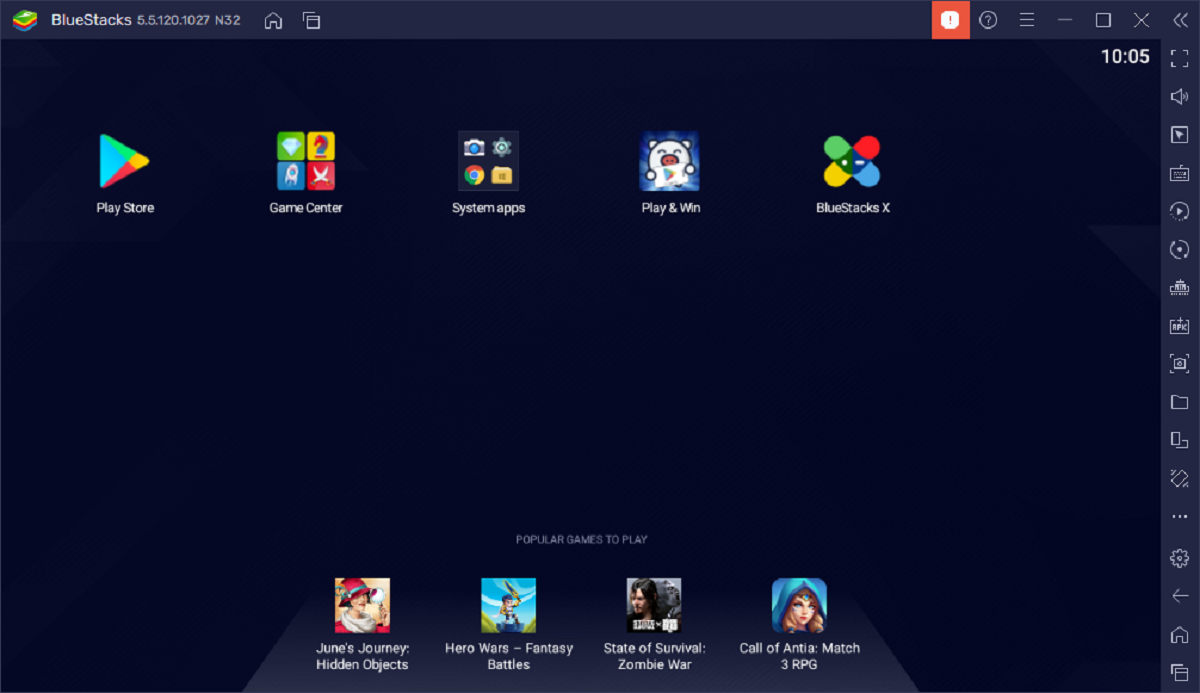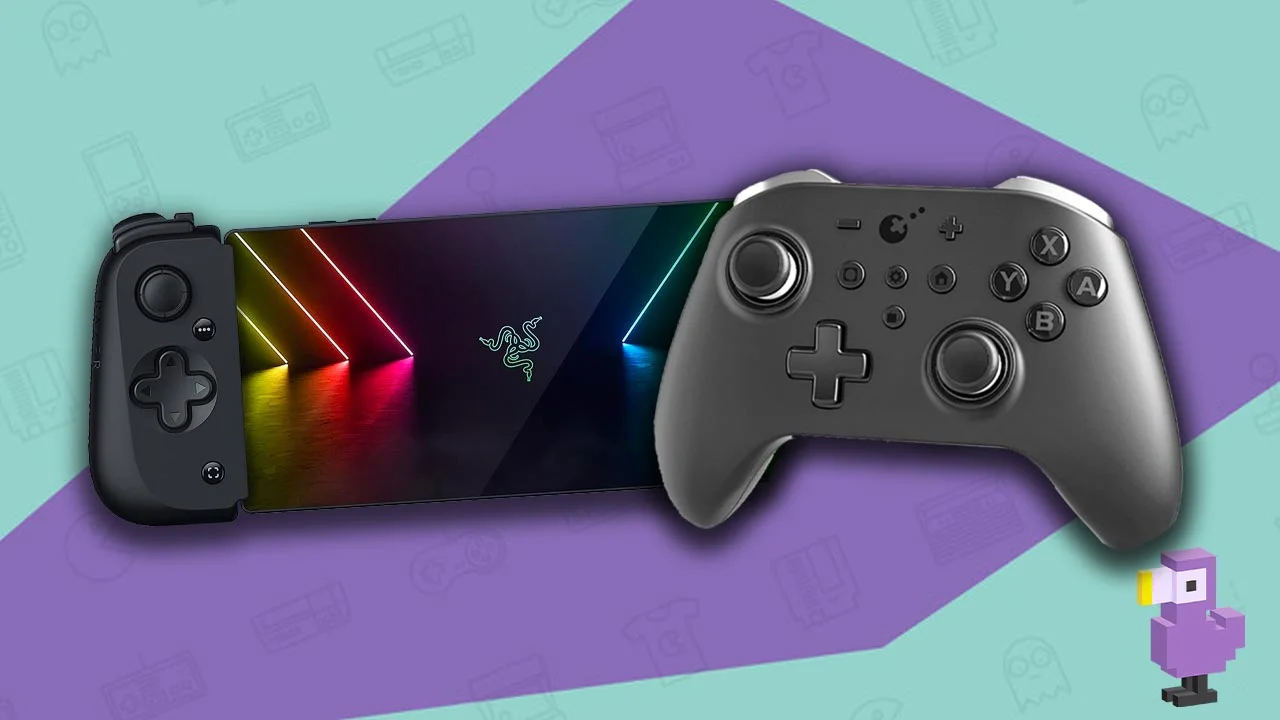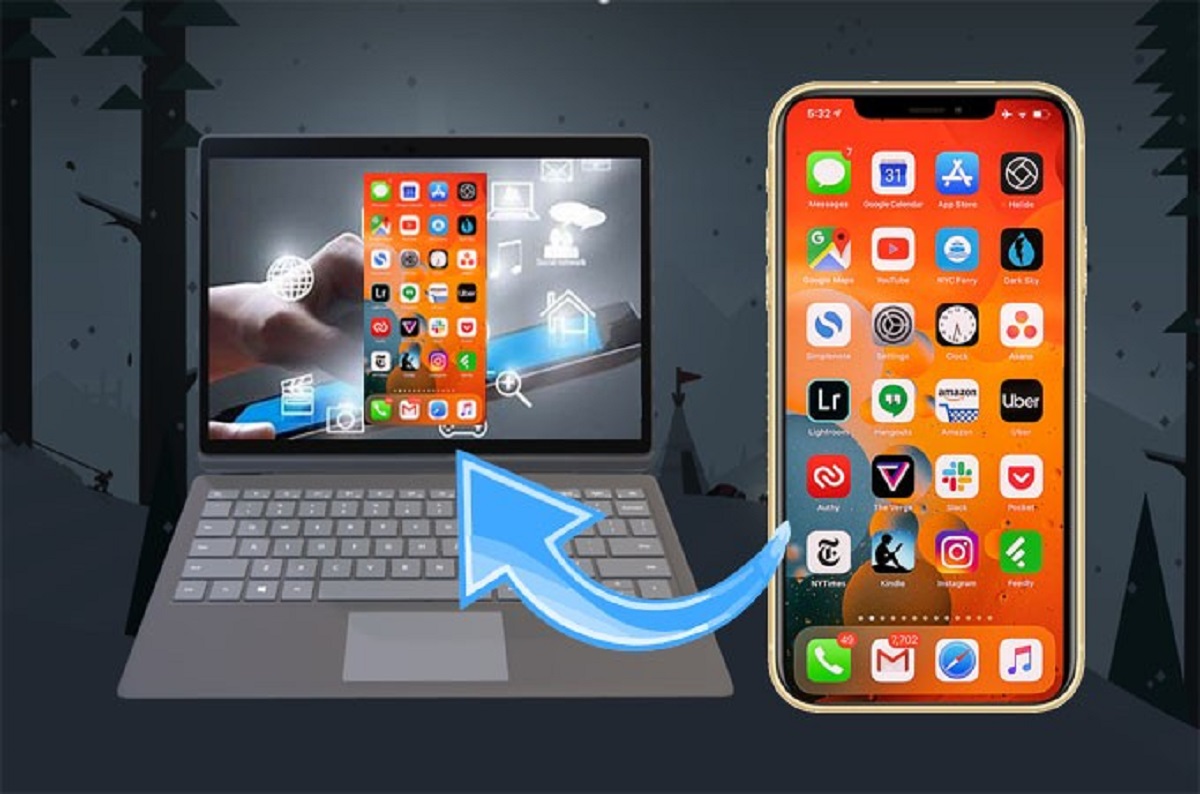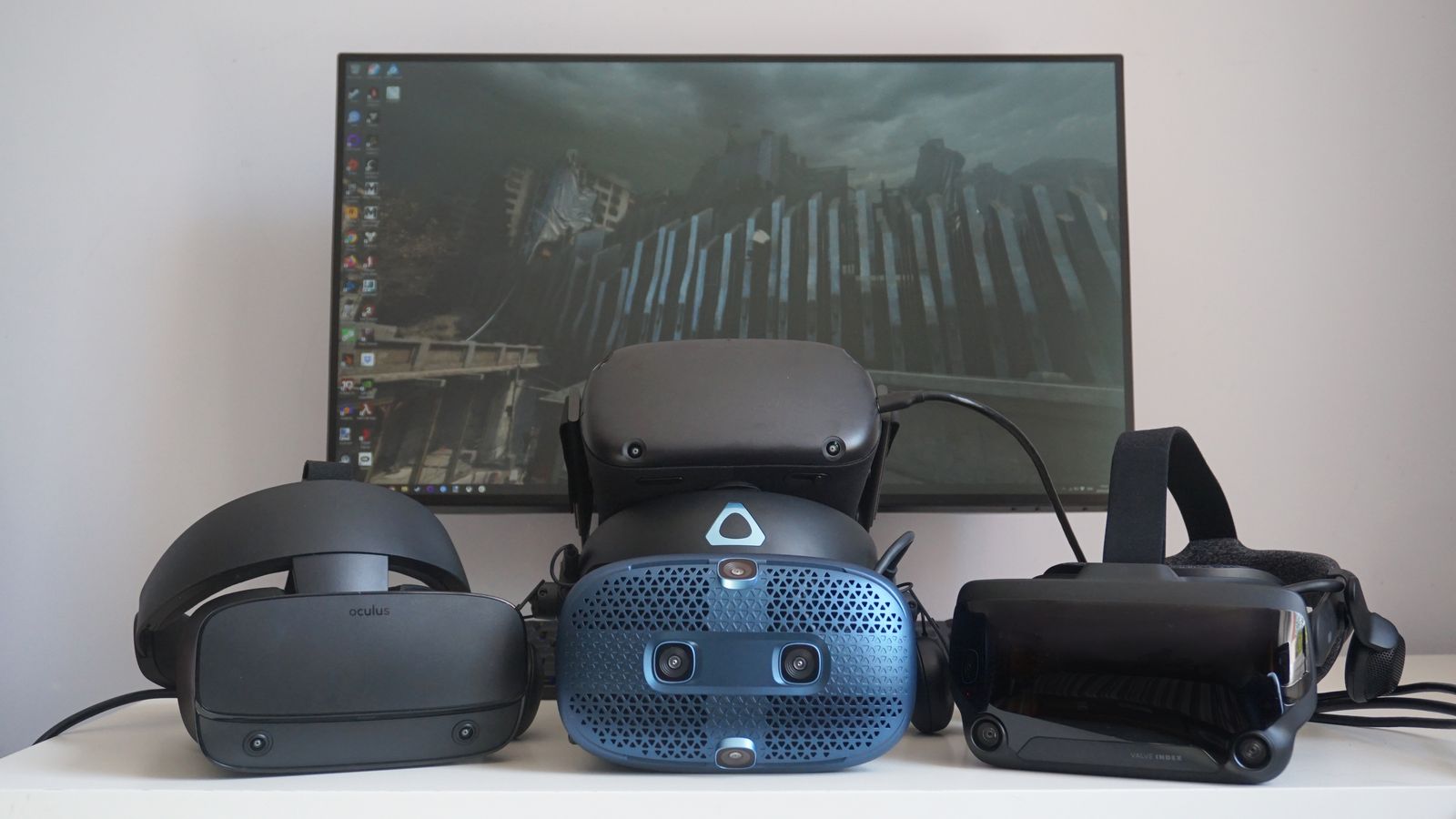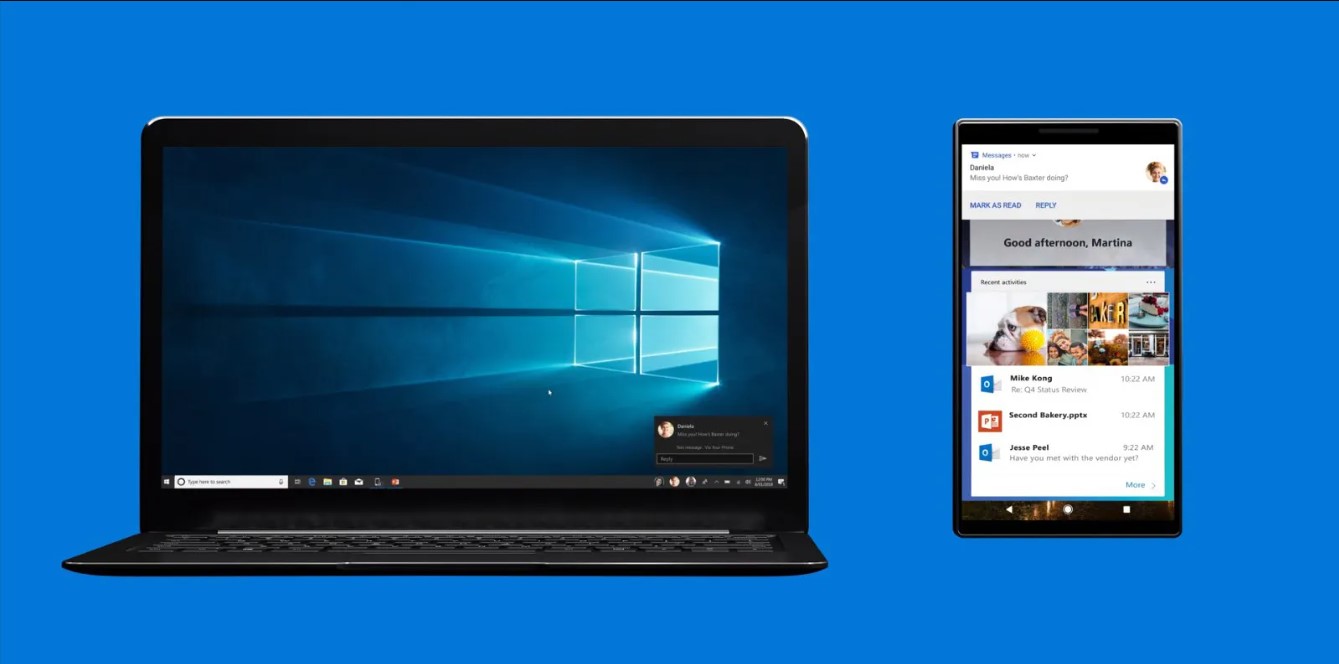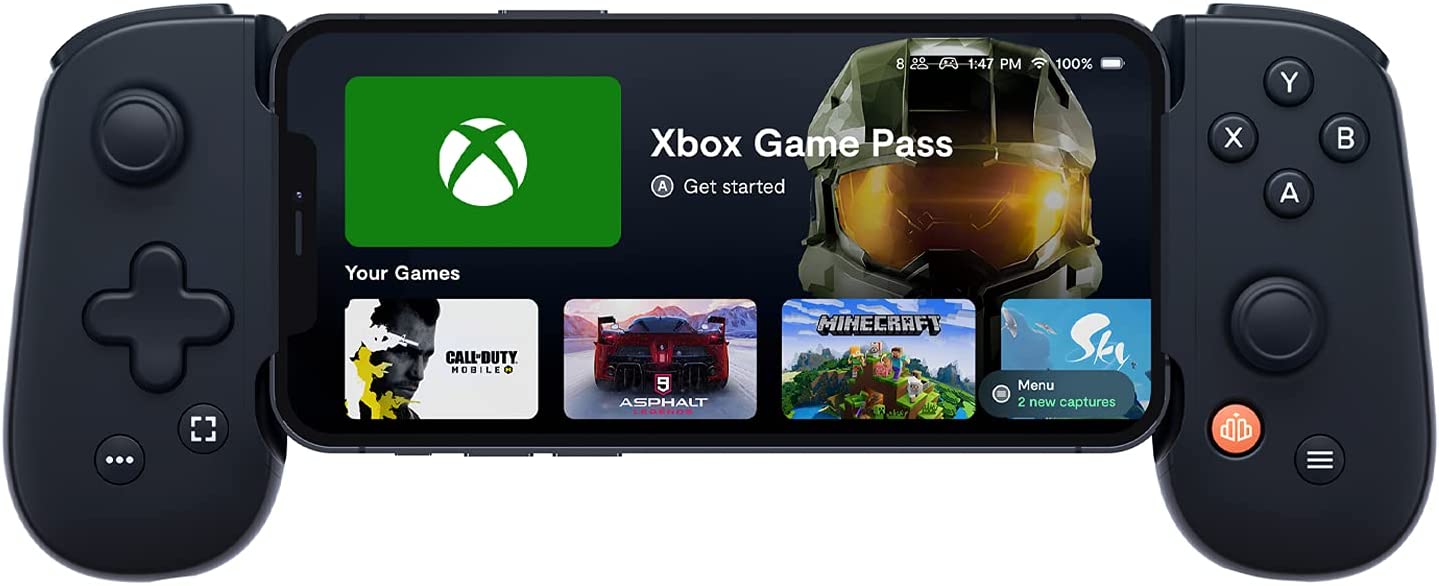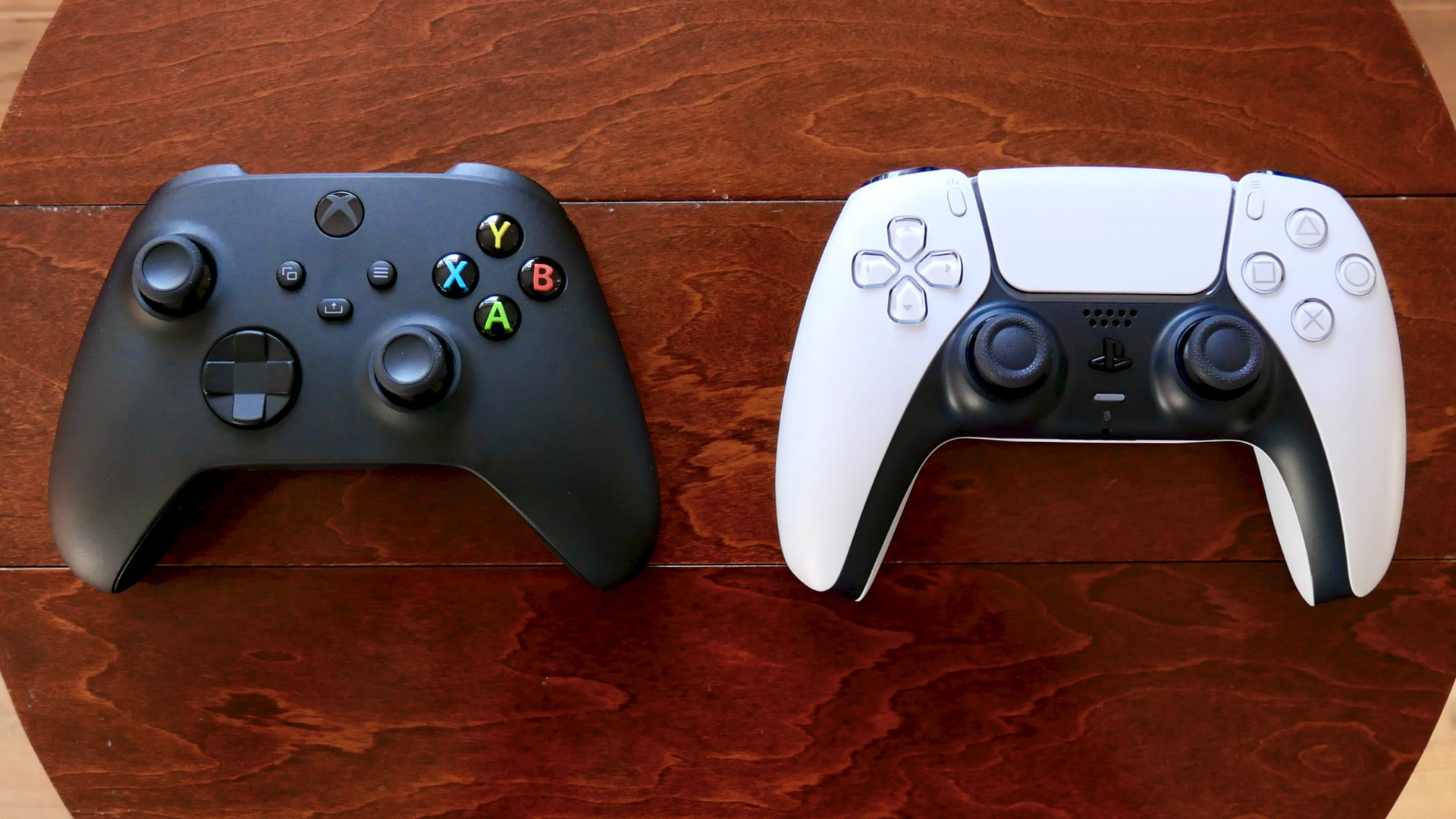Introduction
Welcome to the world of phone gaming on PC! In this digital age, mobile gaming has become incredibly popular, with an abundance of exciting games available on the app stores. However, sometimes you may find yourself wanting a bigger screen, better controls, or the power of your PC to enhance your gaming experience.
Fortunately, there’s a solution: playing phone games on your PC. With the help of emulators, you can enjoy your favorite mobile games on a larger screen, take advantage of your computer’s processing power, and even use a keyboard and mouse for precise controls.
In this article, we will explore the world of phone gaming on PC and guide you through the process of setting up an Android emulator, downloading and installing phone games, and configuring controls to optimize your gaming experience. Whether you’re a casual gamer or a hardcore enthusiast, playing phone games on a PC opens up a whole new world of possibilities.
But why would you want to play phone games on your PC in the first place? There are several advantages to doing so. Firstly, playing on a PC provides a much larger screen compared to the limited real estate of a mobile device, allowing for a more immersive gaming experience. You can enjoy stunning graphics and visual effects in high definition on a big monitor, bringing your favorite games to life like never before.
Secondly, using an emulator on your PC gives you access to the full processing power of your computer, enabling smoother gameplay and faster loading times. Emulators are designed to optimize performance for running mobile apps on a PC, so you can expect enhanced speed and responsiveness when gaming.
Additionally, playing phone games on your PC gives you the freedom to use a keyboard and mouse, which can offer better precision and control compared to touchscreens. This is especially beneficial for genres like first-person shooters, strategy games, and platformers, where precise movements and actions are crucial to success.
Furthermore, playing on a PC allows for multitasking. You can easily switch between your game and other applications, such as web browsers, social media, or messaging apps, without interrupting your gameplay. This versatility ensures that you never miss out on important notifications or updates while enjoying your favorite mobile games.
In the next sections, we will delve deeper into the world of phone gaming on PC. We will discuss popular Android emulators, the installation process, downloading phone games, configuring controls, and provide some handy tips and tricks. By the end of this article, you’ll be ready to embark on your gaming journey and make the most of playing phone games on your PC.
Emulators and their Advantages
Emulators are software programs that mimic the functionality of a specific device or system on a different platform. In the context of phone gaming on PC, Android emulators allow you to run Android applications and games on your computer.
There are numerous advantages to using emulators for playing phone games on PC. Firstly, as mentioned earlier, emulators provide a larger screen, allowing you to fully experience the visuals and details of your favorite games. Whether it’s immersive storytelling, stunning graphics, or intricate gameplay mechanics, playing on a bigger screen can greatly enhance your gaming experience.
Secondly, emulators take advantage of the processing power of your PC, resulting in smoother gameplay and improved performance. Mobile devices often have hardware limitations, but when you play games on an emulator, you can enjoy higher frame rates, reduced lag, and faster loading times. This can make a significant difference in competitive multiplayer games or titles that require quick reflexes and precision.
Another advantage is the ability to customize controls. Emulators allow you to map your keyboard keys, mouse buttons, or even game controllers to simulate touch gestures or virtual buttons. This gives you more flexibility and control, making it easier to execute complex maneuvers or perform precise actions in your games. Additionally, emulators often provide the option to save and load custom control configurations, allowing you to switch between different setups effortlessly.
Furthermore, emulators offer a more comfortable and ergonomic gaming experience. Holding a mobile device for an extended period can cause discomfort and fatigue, especially during long gaming sessions. By playing on a PC, you can use your preferred input devices, such as a keyboard and mouse or a gamepad, making it easier to play for extended periods without straining your hands or fingers.
Emulators also provide the convenience of synchronization between devices. If you have already made progress on a game on your phone, you can seamlessly continue playing on your PC using the same account and game data. This ensures that you don’t lose any progress and can enjoy a seamless gaming experience across different devices.
Lastly, using emulators for phone gaming on PC opens up possibilities for capturing and streaming gameplay. Many emulators come with built-in recording features, allowing you to capture screenshots and videos of your gameplay. This can be useful for sharing your gaming achievements, creating content for streaming platforms, or simply preserving memorable moments.
Overall, emulators provide several advantages when it comes to playing phone games on PC. From larger screens and improved performance to customizable controls and cross-device synchronization, using emulators enhances your gaming experience and gives you more options and flexibility.
Popular Android Emulators
When it comes to playing phone games on PC, there is a wide range of Android emulators to choose from. Each emulator has its own unique features, performance capabilities, and user interface. Let’s take a look at some of the most popular Android emulators available:
- BlueStacks: BlueStacks is one of the most well-known and widely used Android emulators. It offers a user-friendly interface and supports a vast library of games and applications. BlueStacks provides excellent performance, smooth gameplay, and a variety of customization options, including key mapping and multi-instance support for running multiple instances of the emulator simultaneously.
- NoxPlayer: NoxPlayer is another popular Android emulator that offers a clean and intuitive interface. It is known for its extensive compatibility with various games and applications. NoxPlayer provides excellent performance, including high FPS gaming, and supports a wide range of input devices, including keyboards, mice, and gamepads. It also includes features like macro recording and the ability to simulate GPS location.
- MEmu Play: MEmu Play is a powerful Android emulator that focuses on providing a smooth gaming experience. It offers excellent performance, compatibility, and customization options. MEmu Play supports both Intel and AMD processors, allowing it to run on a wide range of systems. It also includes features like key mapping, joystick support, and a built-in video recorder.
- LDPlayer: LDPlayer is a relatively new emulator in the market but has quickly gained popularity among gamers. It offers excellent compatibility and performance, ensuring smooth gameplay even on low-end systems. LDPlayer supports multi-instance and multi-instance sync, allowing you to play multiple games at once or mirror your actions across different instances.
- Andy: Andy is another feature-rich Android emulator that focuses on providing a seamless user experience. It offers most of the standard features found in other emulators, including multi-touch support, keyboard mapping, and the ability to run multiple instances simultaneously. Andy also provides integration with your computer’s file system, allowing you to transfer files between your PC and the emulator easily.
These are just some of the popular Android emulators available, but there are many others to explore. It’s worth noting that the performance and compatibility of emulators can vary depending on your PC’s specifications and the specific game or application you want to run. It’s a good idea to try out different emulators and see which one works best for you.
Remember, when choosing an emulator, consider factors such as performance, ease of use, customization options, and compatibility with the games you want to play. With the right emulator, you can unlock the full potential of phone gaming on your PC and enjoy your favorite mobile games in a whole new way.
Installing an Android Emulator on your PC
To start playing phone games on your PC, you’ll need to install an Android emulator. Follow these steps to get an emulator up and running on your PC:
- Research: Determine which emulator suits your needs by reading reviews, comparing features, and considering your PC’s specifications. Take into account factors such as performance, compatibility, ease of use, and customization options.
- Download: Visit the official website of the chosen emulator and download the installation file. Ensure that you download it from a trusted source to avoid any potential security risks.
- Run the Installer: Locate the downloaded file and double-click on it to start the installation process. Follow the on-screen instructions to proceed with the installation. Make sure to read and accept any license agreements or terms of service.
- Configure Installation Settings: During the installation process, you may have the option to customize certain settings, such as the installation location and additional components. Adjust these settings according to your preferences, or you can stick with the default settings if you’re unsure.
- Wait for the Installation to Complete: Once you have finished configuring the installation settings, click on the “Install” or “Next” button to start the installation process. Wait for the emulator to be installed on your PC. The duration of the installation may vary depending on your computer’s performance.
- Launch the Emulator: Once the installation is complete, you should have a shortcut or icon on your desktop or in your start menu. Double-click on it to launch the emulator. This will open the emulator’s user interface, where you can start setting up and configuring your virtual Android device.
- Initial Setup: The first time you launch the emulator, you may be required to go through an initial setup process. This typically involves signing in with an existing Google account or creating a new one. Provide the necessary details and follow the on-screen instructions to complete the setup.
- Update the Emulator: It is recommended to check for updates for your emulator regularly. Emulator developers often release updates that include bug fixes, performance improvements, and new features. Look for options within the emulator’s settings or help menus to update the software to the latest version.
After completing these steps, you should have an Android emulator successfully installed on your PC. You can now proceed to configure the emulator settings, download and install phone games, and start enjoying your favorite mobile games on a bigger screen with enhanced controls.
Keep in mind that the specific steps and options may vary between different emulators. Refer to the emulator’s documentation or support resources for detailed instructions if you encounter any issues during the installation process. Exploring the emulator’s settings and features can also help you customize the experience according to your preferences and optimize performance for your PC and games.
Setting up the Emulator
Now that you have installed an Android emulator on your PC, it’s time to set it up so you can start playing your favorite phone games. Follow these steps to configure your emulator:
- Language and Region: When you launch the emulator for the first time, you may be prompted to select a language and region. Choose your preferred language and region settings in the emulator’s setup wizard. These settings can usually be changed later in the emulator’s settings menu.
- Sign in to Google: To fully access the Google Play Store and download apps, including games, you will need to sign in with your Google account. Enter your account credentials when prompted, or follow the on-screen instructions to create a new Google account. Signing in allows you to access your purchases, sync game progress, and more.
- App Sync: After signing in, the emulator may start syncing your apps and data from your Google account. Allow the process to complete, as this will ensure that your purchased games, progress, and settings are available on the emulator.
- Play Store Setup: Some emulators require additional setup steps to enable the Play Store. Follow the on-screen instructions to complete the setup and gain access to the extensive library of games available for download. In some cases, the emulator may come preloaded with the Play Store, eliminating the need for additional setup.
- Graphics and Performance Settings: To optimize the performance of the emulator, explore the graphics and performance settings. Adjust the resolution, DPI, and memory allocation according to your PC’s capabilities. Higher settings may offer better visuals but could also require more system resources. Experiment with different settings to find the right balance for smooth gameplay.
- Storage Options: Emulators allow you to allocate storage space for apps and games. Determine how much disk space you want to allocate to the emulator, keeping in mind the size of the games you plan to download. Allocating sufficient storage space ensures that you can install and run multiple games without encountering storage-related issues.
- Network and Internet Connectivity: Emulators usually come with preconfigured internet connectivity. If you are using a wired connection, the emulator should automatically detect and use it. If you are using a Wi-Fi connection, enter your Wi-Fi credentials in the emulator’s settings to connect to your network. A stable internet connection is necessary for downloading and updating games.
- Update Emulator and Apps: Similar to any software, emulators and installed apps may receive updates periodically. Check for updates within the emulator’s settings or help menus and keep your emulator and installed apps up to date. Updates often include bug fixes, performance improvements, and new features, ensuring a smooth and secure gaming experience.
Once you have completed these setup steps, your emulator should be ready to use. You can now proceed to download and install phone games from the Google Play Store or other sources, configure controls, and begin playing your favorite games on your PC.
Remember to explore the various settings and options available in the emulator to customize the experience according to your preferences. Each emulator may have its own unique set of features and customization options, so take the time to familiarize yourself with the emulator’s settings and make adjustments based on your needs.
Downloading and Installing Phone Games on the Emulator
Now that you have set up the emulator on your PC, it’s time to download and install phone games. Follow these steps to get your favorite games up and running:
- Open the Google Play Store: Launch the emulator and locate the Google Play Store app on the home screen. Click on it to open the store.
- Sign in to your Google Account: If you haven’t already signed in to your Google account within the emulator, you will be prompted to do so. Enter your account credentials and sign in to access the Play Store.
- Browse or Search for Games: Use the search bar or explore the categories, featured games, or top charts in the Play Store to find the game you want to download. You can also browse through user reviews and ratings to make an informed decision.
- Select and Install the Game: Once you have found a game you want to play, click on it to view its details page. Review the description, screenshots, and user reviews to ensure it meets your expectations. Click the “Install” button to begin the installation process.
- Wait for the Download and Installation: The game will begin downloading and installing automatically. The duration of this process depends on the size of the game and your internet connection speed. Be patient and avoid interrupting the download or installation process.
- Access the Installed Game: Once the game has finished installing, you can access it either from the Play Store or by finding its icon on the emulator’s home screen or app drawer. Click on the game’s icon to launch it and start playing.
- Update Games: Periodically, game developers release updates containing bug fixes, new features, and improvements. To ensure the best gaming experience, keep your installed games up to date. Visit the Play Store, go to the “My apps & games” section, and look for any available updates. Click on the “Update” button next to the game to update it to the latest version.
- Alternative Game Sources: While the Google Play Store is the primary source for Android games, there are also other reliable sources available for downloading games. Many game developers offer their games directly from their websites or other trusted platforms. Ensure that you download games from reputable sources to avoid any security risks.
Remember to keep your emulator and installed games up to date by regularly checking for updates. This ensures that you benefit from the latest features, performance enhancements, and bug fixes.
With the ability to download and install phone games on your emulator, you can now enjoy a wide variety of games on your PC, with the larger screen and enhanced controls that it provides.
Additionally, if you have already downloaded games on your mobile device, you can transfer the APK files to your PC and install them directly on the emulator. This allows you to continue playing your favorite games without having to download them again.
Now that you have successfully downloaded and installed phone games on your emulator, it’s time to configure the controls and keybindings to ensure a seamless and enjoyable gaming experience.
Configuring Controls and Keybindings
Once you have downloaded and installed phone games on your emulator, it’s important to configure the controls and keybindings to optimize your gaming experience. Here’s how you can do it:
- Access the Controls Settings: Open the game you want to configure and navigate to its settings menu. Look for options related to controls or input settings. The location of these settings may differ from game to game, so explore the options and menus to find the relevant settings.
- Choose your Input Method: Emulators offer various input methods, including keyboard, mouse, and gamepad. Decide which input method you prefer and have access to. Most games support keyboard and mouse input, so they are generally the default options. If you prefer using a gamepad, make sure it’s connected to your PC and recognized by the emulator.
- Configure Keyboard Controls: If you’re using a keyboard, you can customize the keybindings to your preference. Some games have predefined control presets that you can choose from, while others allow you to manually assign keys for specific actions, such as movement, jumping, shooting, etc. Experiment with different keybindings to find the setup that feels most comfortable and intuitive for you.
- Customize Mouse Controls: For games that require mouse input, you can adjust the sensitivity and customize the mouse buttons’ functions. Some games may offer the ability to enable or disable mouse acceleration or change the cursor speed. Experiment with these settings to find the right balance for smooth and precise mouse movements.
- Gamepad Configuration: If you prefer using a gamepad, check if the game supports gamepad input. Connect your gamepad to your PC and ensure that the emulator recognizes it. Access the game’s settings and look for options to configure the gamepad controls. You may need to map the buttons and analog sticks of your gamepad to the corresponding in-game actions.
- Save and Test the Configurations: After customizing the controls, make sure to save the configurations. Some games provide an option to save control profiles, allowing you to switch between different setups easily. Once you have saved the settings, test them in-game to ensure that the controls are functioning as desired.
- Adjust as Needed: If you find that the controls are not optimal or require further adjustments, revisit the settings menu and make the necessary changes. Tweak the keybindings, sensitivity settings, or any other control-related options to achieve the best gaming experience for each specific game you play.
Remember to consult the game’s documentation or community forums if you encounter any difficulties configuring the controls. Some games may have specific settings or requirements that you need to be aware of to achieve the best control setup.
By taking the time to configure the controls and keybindings to your preference, you can ensure a seamless and enjoyable gaming experience on your PC emulator. Experiment with different control setups and find what works best for you in each game.
Now that you have successfully configured the controls and keybindings, you are ready to dive into the world of phone gaming on your PC. Enjoy the larger screen, better controls, and enhanced performance as you immerse yourself in your favorite mobile games.
Playing Phone Games on your PC
Now that your Android emulator is set up and you have downloaded and configured your favorite phone games, it’s time to enjoy playing them on your PC. Here are some tips to enhance your experience:
- Take advantage of the larger screen: One of the major benefits of playing phone games on your PC is the larger screen size. Enjoy stunning graphics, detailed visuals, and immersive gameplay on the bigger display. Explore the game’s environments, characters, and intricate details that may have been harder to appreciate on a mobile device.
- Utilize better controls: Playing on a PC allows you to use a keyboard and mouse or gamepad, giving you more precision and control over your in-game actions. Take the time to familiarize yourself with the control scheme and practice using them effectively. This can improve your gameplay performance, especially in genres that require precise movements or quick reflexes.
- Optimize graphics and performance: Emulators often provide options to adjust the graphics settings and performance parameters. Experiment with these settings to find the balance that works best for your PC’s capabilities and the specific game you are playing. Higher settings may offer better visuals, but lower settings can improve performance on less powerful systems.
- Take breaks and maintain good posture: Gaming sessions can be immersive, but it’s important to remember to take breaks and maintain a good posture. Sitting for long periods can lead to discomfort and potential health issues. Stand up, stretch, and take short breaks between gaming sessions to avoid fatigue and strain on your body.
- Explore additional features and mods: Some emulators offer additional features, such as screen recording, screenshot capturing, and the ability to run multiple instances of the emulator simultaneously. Exploring these features can enhance your overall gaming experience and allow you to share your gameplay moments with others.
- Connect with friends: Many phone games support multiplayer modes or social features. Connect with your friends or other players online to team up, compete, or simply enjoy gaming together. Emulators usually provide options for communication, such as in-game chat or voice chat, making it easy to stay connected while gaming.
- Experiment with different games: Now that you have access to a wide range of phone games on your PC, don’t be afraid to explore different genres and titles. Try out new games that you may not have considered on a mobile device. With the power of your PC, you can experience a variety of games and discover new favorites.
Remember, every game is different, and the experience on an emulator may vary from playing on a mobile device. Take your time to adapt and find what works best for you. Experiment with different settings, controls, and games to optimize your gaming experience on your PC.
Playing phone games on your PC opens a whole new world of possibilities, combining the convenience of mobile gaming with the advantages of a PC setup. So sit back, relax, and immerse yourself in the thrilling world of phone gaming on your PC.
Tips and Tricks for Phone Gaming on PC
Playing phone games on your PC can be a delightful and immersive experience. To further enhance your gaming sessions, here are some tips and tricks to keep in mind:
- Stay updated with the latest emulator versions: Emulator developers often release updates to improve performance, add new features, and fix bugs. Make sure to regularly check for updates and keep your emulator up to date to ensure the best gaming experience.
- Customize your emulator settings: Explore the settings of your emulator to customize various aspects like graphics, performance, control sensitivity, audio settings, and more. Each game may have unique requirements, so adjusting these settings can help optimize your gameplay experience.
- Experiment with different control schemes: Don’t hesitate to try different control schemes to find what works best for you. Some games may offer alternative control options, such as touch emulation or gyroscopic controls. Explore these options to discover new ways to play and improve your performance.
- Take advantage of keyboard shortcuts: Keyboard shortcuts can provide quick access to various in-game actions and functions. Check the game’s documentation or settings to see if there are any predefined keyboard shortcuts. Additionally, you can create your own custom shortcuts via the emulator’s key mapping feature.
- Use screen recording for content creation: If you enjoy sharing your gaming moments or creating content for platforms like YouTube or Twitch, take advantage of the screen recording feature offered by many emulators. Record your gameplay sessions and capture those epic moments to share with your audience.
- Join gaming communities and forums: Engage with fellow gamers who play phone games on PC by joining online communities and forums. There, you can find game recommendations, troubleshooting tips, and even make new friends to play with. Sharing experiences and insights can enrich your overall gaming journey.
- Consider game performance and compatibility: Keep in mind that not all phone games may work perfectly on every emulator. Some games may have compatibility issues or require specific settings to run smoothly. Before diving into a new game, check user reviews, forums, or emulator compatibility lists to ensure a smooth and enjoyable gaming experience.
- Optimize your PC for gaming: To ensure optimal performance while playing phone games on your PC, consider optimizing your PC for gaming. Close unnecessary background applications, update graphics drivers, and ensure your system meets the recommended requirements for the emulator and games you intend to play.
- Take breaks and practice good gaming habits: Gaming can be addictive, so remember to take regular breaks, stay hydrated, and practice good posture. Remember to give your eyes a rest by looking away from the screen periodically. Maintaining a healthy balance between gaming and other activities is essential for your overall well-being.
By applying these tips and tricks, you can enhance your phone gaming experience on your PC and fully enjoy the games you love. Embrace the possibilities, challenge your skills, and immerse yourself in the captivating world of phone gaming on your PC.
Conclusion
Phone gaming on PC offers a fantastic way to experience your favorite mobile games on a larger screen, with better controls, and enhanced performance. Emulators provide the means to bridge the gap between mobile and PC gaming, allowing you to enjoy a diverse range of games from the comforts of your computer.
In this article, we explored the process of installing an Android emulator on your PC, setting it up, and downloading phone games. We also discussed how to configure controls and keybindings to optimize your gaming experience. By following these steps, you can seamlessly transition from mobile to PC gaming and take advantage of the unique benefits that each platform offers.
With the larger screen size, you can immerse yourself in the captivating visuals and details of your favorite games. The ability to use a keyboard and mouse or gamepad provides better precision and control, enhancing your gameplay performance in various genres. Emulators also allow you to customize settings, optimize performance, and explore additional features, giving you ultimate control and flexibility in your gaming experience.
Furthermore, by joining gaming communities and forums, you can connect with like-minded individuals, share experiences, and discover new games and tips. The possibilities of phone gaming on PC are endless, enabling you to expand your gaming horizons and discover new favorites.
Remember to consider game compatibility, update your emulator and games regularly, and practice good gaming habits. Taking breaks, maintaining good posture, and optimizing your PC for gaming can help ensure an enjoyable and healthy gaming experience.
Now that you have the knowledge and tools to play phone games on your PC, it’s time to dive into the vast world of mobile gaming. So grab your emulator, download your favorite games, and embark on exciting gaming adventures on the larger screen and enhanced controls of your PC.
Enjoy the best of both worlds as you indulge in the captivating realm of phone gaming on your powerful PC setup!







